4-BroMo-N-(4-broMophenyl)-3-[[(phenylMethyl)aMino]sulfonyl]benzaMide
Synonym(s):3-((Benzylamino)sulfonyl)-4-bromo-N-(4-bromophenyl)-benzamide, RS-1;3-[(benzylamino)sulfonyl]-4-bromo-N-(4-bromophenyl)benzamide;4-Bromo-N-(4-bromophenyl)-3-[[(phenylmethyl)amino]sulfonyl]-benzamide;RAD51-stimulatory compound 1;RAD51-Stimulatory Compound-1, RS-1 - CAS 312756-74-4 - Calbiochem
- CAS NO.:312756-74-4
- Empirical Formula: C20H16Br2N2O3S
- Molecular Weight: 524.23
- MDL number: MFCD00348720
- SAFETY DATA SHEET (SDS)
- Update Date: 2025-12-18 14:26:18
![4-BroMo-N-(4-broMophenyl)-3-[[(phenylMethyl)aMino]sulfonyl]benzaMide Structural](https://img.chemicalbook.in/CAS/GIF/312756-74-4.gif)
What is 4-BroMo-N-(4-broMophenyl)-3-[[(phenylMethyl)aMino]sulfonyl]benzaMide?
Description
RS-1 is an activator of DNA repair protein RAD51 (Kd = 48-107 for human RAD51 with different cofactors present). It stimulates homologous strand assimilation activity at least 5- to 11-old, enhancing homologous recombination activity of hRAD51. RS-1 is a potent enhancer of CRISPR-mediated genome editing, increasing homology directed repair 3- to 6-fold. It is used to increase CRISPR-mediated knock-in efficiencies in vitro and in vivo.
The Uses of 4-BroMo-N-(4-broMophenyl)-3-[[(phenylMethyl)aMino]sulfonyl]benzaMide
4-Bromo-N-(4-bromophenyl)-3-[[(phenylmethyl)amino]sulfonyl]benzamide is a stimulant of the human homologous recombination protein RAD51.
The Uses of 4-BroMo-N-(4-broMophenyl)-3-[[(phenylMethyl)aMino]sulfonyl]benzaMide
RS-1 has been shown to enhance CRISPR genome editing efficiency. To see other small molecule CRISPR enhancers, visit sigma.com/CRISPR-enhancers.
What are the applications of Application
RAD51-Stimulatory Compound-1, RS-1 is a cell-permeable sulfonamide-benzamide compound
General Description
A cell-permeable sulfonamido-benzamide-based allosteric regulator that stimulates DNA binding and recombinase activities of hRAD51 by locking hRAD51 in an active conformation without affecting its active site ATP hydrolysis. Although RS-1 enhances hRAD51 filament formation on ssDNA with or without the cofactor NTP, active filaments and recombinase activity are only induced in the presence of ATP or AMP-PNP, but not with ADP or no cofactors. Shown to promote resistance of primary human neonatal dermal fibroblasts to Cisplatin- (Cat. No. 232120) induced death in a dose-dependent manner. RS-1 is inactive toward related DNA strand exchange proteins scRAD5 and scDMC1 of yeast origin or E. coli RedA.This HDR (homology-directed repair) enhancer, is shown to significantly increase both Cas9 & TALEN-mediated knock-in efficiencies.
Biological Activity
RS-1 is a RAD51-stimulatory compound, which increases the DNA binding activity of RAD51. It is an HDR(homology-directed repair) enhancer that enhances Cas9- and TALEN-mediated knock-in efficiency in rabbit embryos both in vitro and in vivo.
Biochem/physiol Actions
RS-1 is a sulfonamido-benzamide compound.
in vitro
RS-1 stimulates the binding of hRAD51 to ssDNA. Low-micromolar concentrations of this small molecule enhance DNA binding and result in longer protein–DNA complex lengths. In addition, RS-1 stabilizes the active form of hRAD51 filaments and this is reflected in an enhanced strand assimilation activity[1]. RS-1 enhances Cas9- and TALEN-mediated knock-in efficiency in rabbit embryos both in vitro and in vivo.
Storage
Room temperature
References
1) Jayathilaka et al. (2008), A chemical compound that stimulates the human homologous recombination protein RAD51; Proc. Natl. Acad. Sci. USA 105 15848 2) Mason et al. (2014), The RAD51-stimulatory compound RS-1 can exploit the RAD51 overexpression that exists in cancer cells and tumors; Cancer Res. 74 3546 3) Pinder et al. (2015), Nuclear domain ‘knock-in’ screen for the evaluation and identification of small molecule enhancers of CRISPR-based genome editing; Nucleic Acids Res. 43 9379 4) Song et al. (2016), RS-1 enhances CRISPR/Cas9- and TALEN-mediated knock-in efficiency; Nat. Commun. 7 10548
Properties of 4-BroMo-N-(4-broMophenyl)-3-[[(phenylMethyl)aMino]sulfonyl]benzaMide
| Density | 1.680±0.06 g/cm3(Predicted) |
| storage temp. | room temp |
| solubility | DMSO: ≥10mg/mL |
| form | powder |
| pka | 10.16±0.30(Predicted) |
| color | off-white to light tan |
| Stability: | Stable for 1 year from date of purchase as supplied. Solutions in DMSO may be stored at -20°C for up to 3 months. |
| CAS DataBase Reference | 312756-74-4 |
Safety information for 4-BroMo-N-(4-broMophenyl)-3-[[(phenylMethyl)aMino]sulfonyl]benzaMide
| Signal word | Warning |
| Pictogram(s) |
 Exclamation Mark Irritant GHS07 |
| GHS Hazard Statements |
H319:Serious eye damage/eye irritation |
| Precautionary Statement Codes |
P305+P351+P338:IF IN EYES: Rinse cautiously with water for several minutes. Remove contact lenses, if present and easy to do. Continuerinsing. |
Computed Descriptors for 4-BroMo-N-(4-broMophenyl)-3-[[(phenylMethyl)aMino]sulfonyl]benzaMide
| InChIKey | VBOWCZDVEOFGRY-UHFFFAOYSA-N |
New Products
Indole Methyl Resin tert-butyl 9-methoxy-3-azaspiro[5.5]undecane-3-carboxylate Boc-His(Boc)-OH 2-CTC Resin 4-Chloro-7-tosy1-7Hpyrrolo[2,3-d]pyrimidine 5,7-Dibromo-1H-indole 2,5-dichloro-N-hydroxy-4,6-dimethylpyridine-3-carboximidamide 2,2-Dimethoxy-7-azaspiro[3.5]nonane hydrochloride 4-chloromethyl-5-methyl-1,3-dioxol-2-one (DMDO-Cl) R-2-BENZYLOXY PROPIONIC ACID 1,1’-CARBONYLDIIMIDAZOLE 1,1’-CARBONYLDI (1,2-4 TRIAZOLE) N-METHYL INDAZOLE-3-CARBOXYLIC ACID 4-((2-hydroxyethyl)thio)benzoic acid 1-(TERT-BUTOXYCARBONYL)-2-PYRROLIDINONE Methyl 6-methylnicotinate 3-Pyridineacrylic acid tert-Butyl carbazate TETRAHYDRO-2H-PYRAN-3-OL 2-((4-morpholinophenylamino) (methylthio) methylene) malononitrile 3-(4-morpholinophenylamino)-5-amino-1H-pyrazole-4-carbonitrile 2,4-dihydroxybenzaldehyde 1,3-Diethyl-1,3-Diphenylurea Methyl 2-methylquinoline-6-carboxylateRelated products of tetrahydrofuran

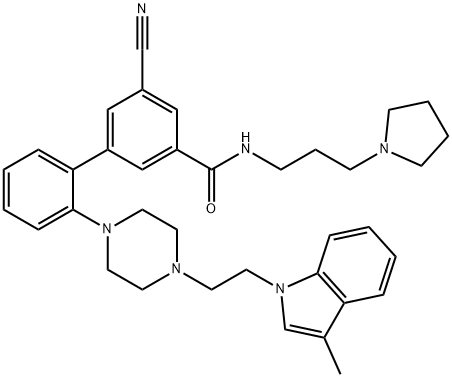
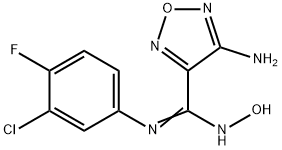
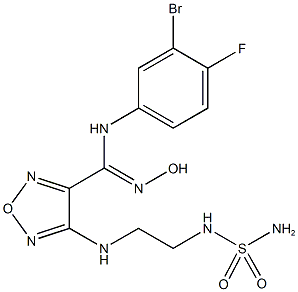
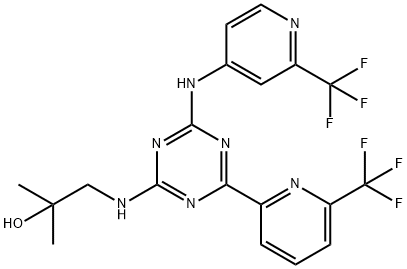
![3,4-dimethoxy-N-[4-(3-nitrophenyl)-1,3-thiazol-2-yl]benzenesulfonamide](https://img.chemicalbook.in/CAS/GIF/199666-03-0.gif)
![2-(2-Chlorophenyl)-4-(3-(diMethylaMino)phenyl)-5-Methyl-1H-pyrazolo[4,3-c]pyridine-3,6(2H,5H)-dione](https://img.chemicalbook.in/CAS/20150408/GIF/1218942-37-0.gif)
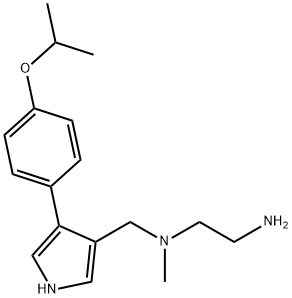
You may like
-
 Rs-1 95% CAS 312756-74-4View Details
Rs-1 95% CAS 312756-74-4View Details
312756-74-4 -
 RAD51-Stimulatory Compound-1, RS-1 CAS 312756-74-4View Details
RAD51-Stimulatory Compound-1, RS-1 CAS 312756-74-4View Details
312756-74-4 -
 RS-1 CAS 312756-74-4View Details
RS-1 CAS 312756-74-4View Details
312756-74-4 -
 Pyridine 99.5% HPLC /UV SpectroscopyView Details
Pyridine 99.5% HPLC /UV SpectroscopyView Details
110-86-1 -
 Piperazine Spot supply, best priceView Details
Piperazine Spot supply, best priceView Details
110-85-0 -
 Dibutyl PhthalateView Details
Dibutyl PhthalateView Details
84-74-2 -
 Imidazole Spot supply, competitive priceView Details
Imidazole Spot supply, competitive priceView Details
288-32-4 -
 Thiourea 99% ARView Details
Thiourea 99% ARView Details
62-56-6
